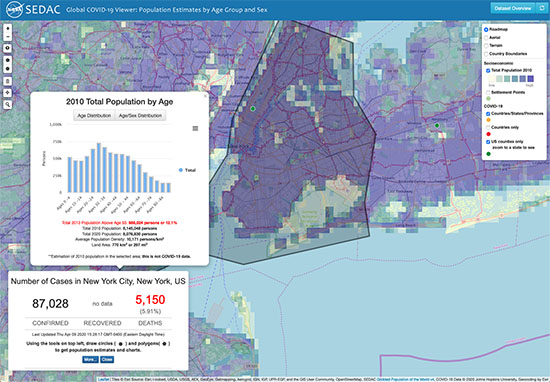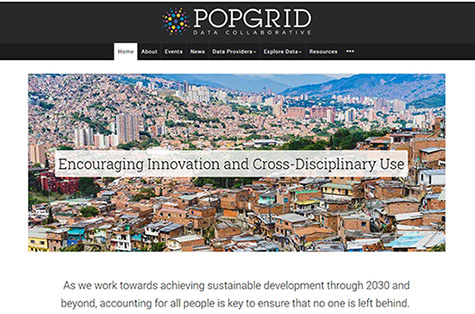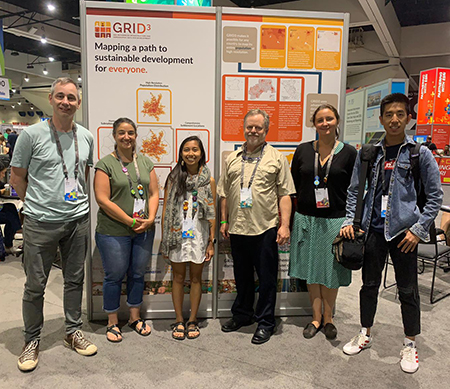The 2020 United Nations (UN) World Data Forum was held virtually October 19–21, in place of a physical meeting in Bern, Switzerland, that has been postponed to 2021. The Forum serves as a platform for intensifying cooperation on sustainable development data across a diverse set of communities, under the auspices of the UN Statistical Commission.
Several CIESIN staff participated actively in the Forum. On October 20, Sandra Baptista, senior research associate, and Andrea Jordan, special assistant to the deputy director, both representing the Geo-Referenced Infrastructure and Demographic Data for Development (GRID3) program, co-organized the live panel, “Use of Geospatial Data to Support COVID-19 Response,” with Colombia’s National Administrative Department of Statistics (DANE). The panel was moderated by Io Blair-Freese of the Bill & Melinda Gates Foundation and included two partners in the GRID3 program: Prince Clem Ikanade Agba, minister of state for budget and national planning of the Federal Republic of Nigeria and co-chair of GRID3′s Nigeria national steering committee; and David Moinina Sengeh, minister of basic and senior secondary education and chief innovation officer for the Government of Sierra Leone.
The Forum also included a number of pre-recorded sessions. NASA, UN-Habitat, the European Space Agency, and the Group on Earth Observations (GEO) organized a session on the use of Earth observations to make cities inclusive, safe, resilient, and sustainable. CIESIN Director Robert Chen co-authored a short presentation with Thomas Kemper of the European Commission′s Joint Research Centre on behalf of the GEO Human Planet Initiative, which he co-leads. They also participated in a pre-recorded question-and-answer session.
Recordings of Forum sessions are now available online. The UN World Data Forum was originally established in response to a key recommendation in the 2014 report, “A World that Counts: Mobilising the Data Revolution for Sustainable Development,″ prepared by the UN Secretary-General′s Independent Expert Advisory Group on a Data Revolution for Sustainable Development.





